The secrets of the past are locked up in language. Ancient scripts can reveal so much about the way that Indians from over 2,000 years ago lived, prayed, traded and moved through the world. In our quiz below, you’ll encounter scripts that originated in India as well as those that travelled here through conquests. Get started to test your knowledge of ancient Indian scripts.
Results
The writing’s on the wall: congratulations, you have a high score!

The questions were tough, but we hope you had fun playing!

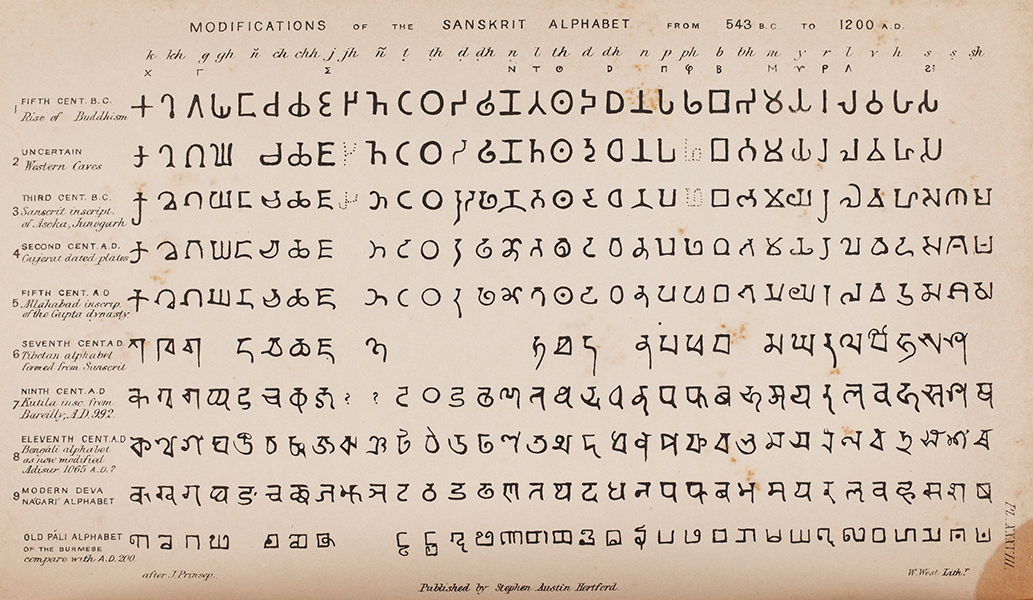
#1. What is the word used to refer to the scripts of ancient India:
In Sanskrit and Pali, ‘Lipi’ refers to script and writing systems. Buddhist scriptures list as many as 64 lipi or scripts and Jainism lists 18. In the Hindu Vedas, ‘lipi’ evolves to mean different things including ‘to paint or anoint’. Lipi is the root of Hindi words like ‘lekh’ and ‘rekha’. Emperor Ashoka referred to his famous edicts as lipi.
Image: Table on the ‘Modification of Sanskrit Alphabet’ From Essays on Indian Antiquities Vol. II, James Princep, 1858 © Sarmaya Arts Foundation 2017.7.12 (2)
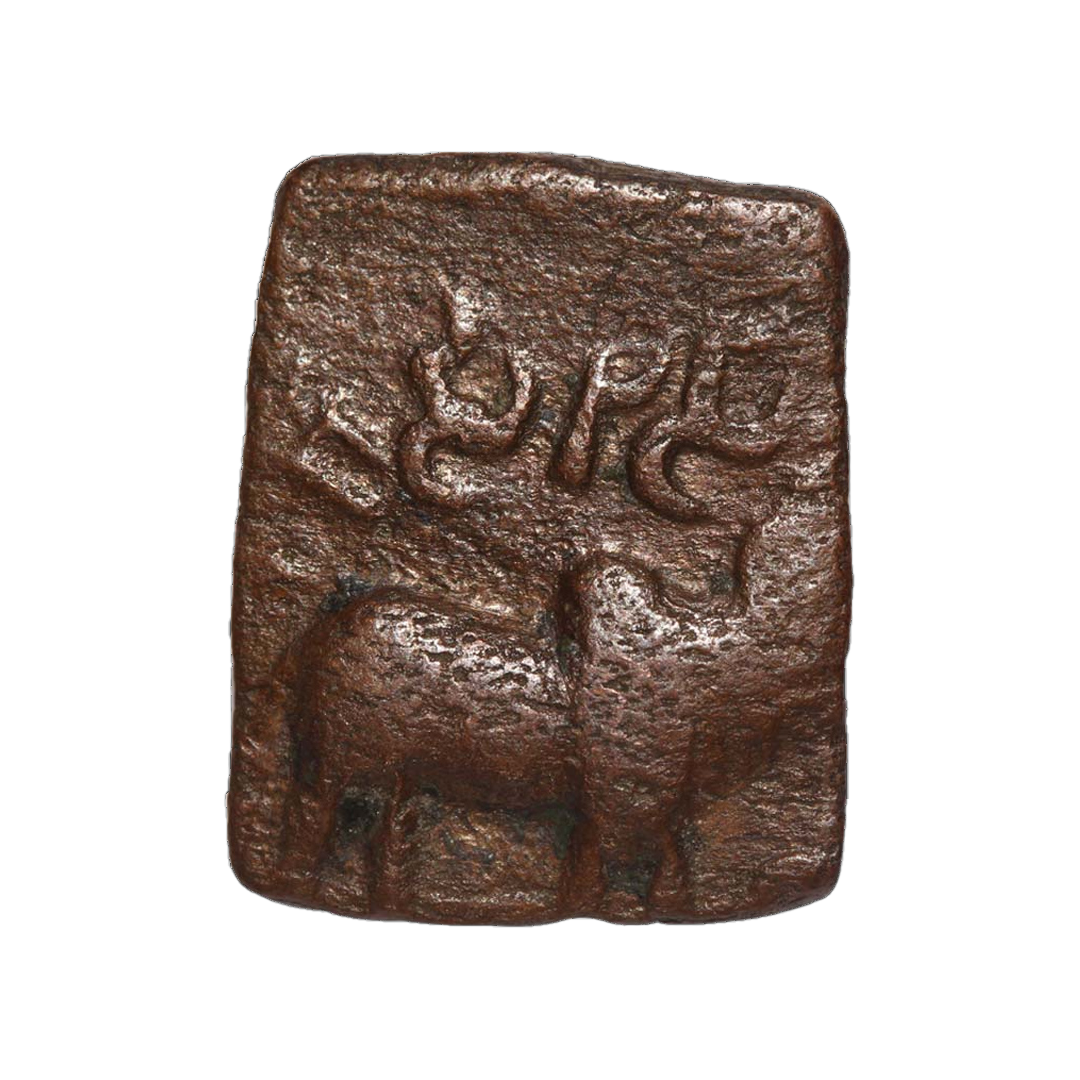
#2. What is the name of the script on this coin?
Brahmi is the most influential of all ancient Indian scripts, the source of such widely used writing systems as Devanagari, Tamil, Bengali, Gujarati, Sinhala and over a hundred others in Asia. Brahmi inscriptions have been found on objects dating as far back as the 4th Century BCE, and the script was widely used during the reign of Emperor Ashoka. On the face of this coin from the 1st Century BCE is the Brahmi legend ‘Sri Sa’, which refers to the Satavahana king Sri Satakarni. Learn more about the dynasty and this coin here.
Image: Obverse of copper coin by Kochiputra Sri Satakarni, 1st century BCE © Sarmaya Arts Foundation 2015.N.125.59
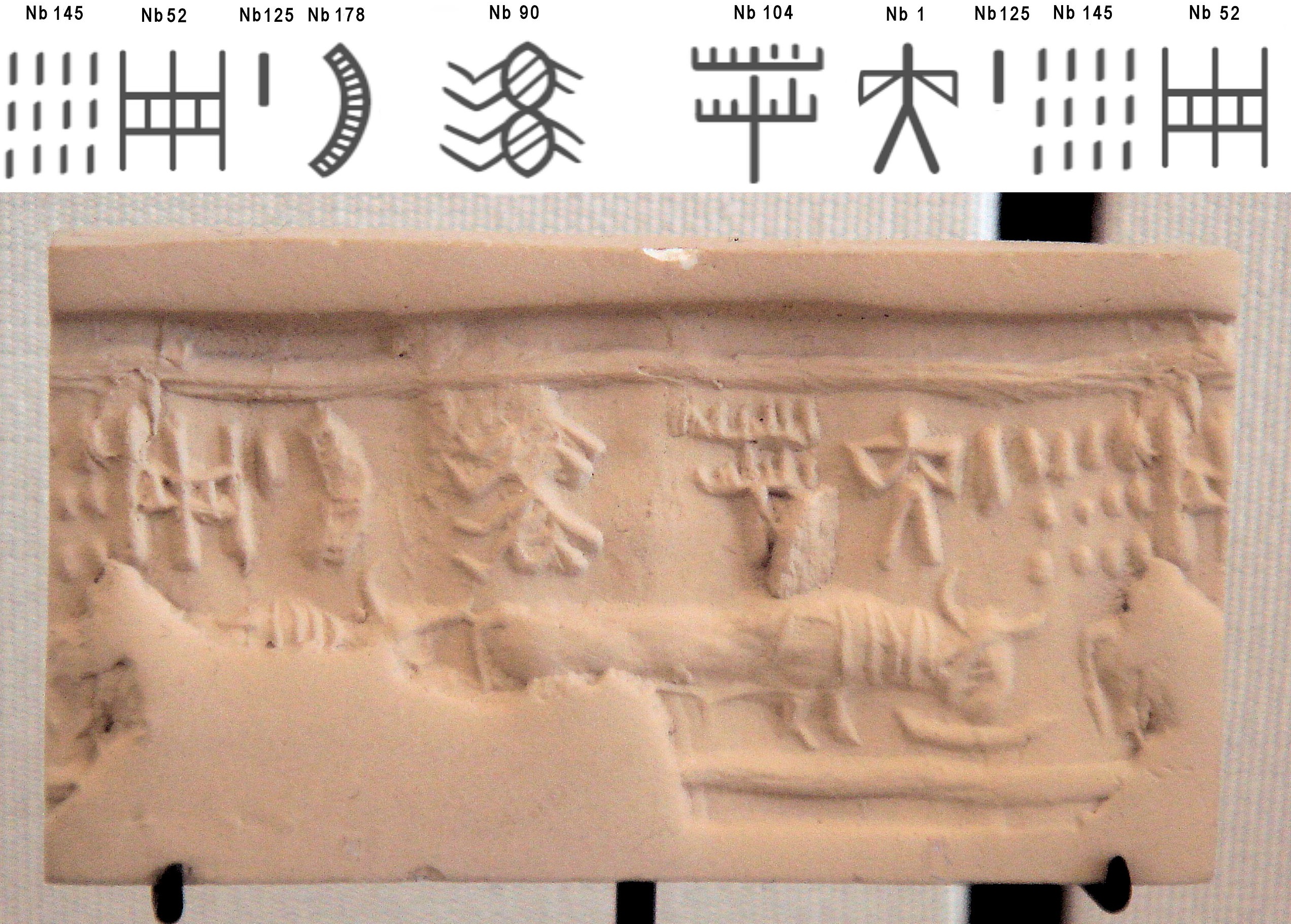
#3. Which ancient script from the Indian subcontinent is still waiting to be deciphered?
The Harappan or Indus Valley script is found in inscriptions on pottery, bronzes, tools and seals dating from 2800 BCE—and it remains undeciphered to this day. As our link to one of the oldest civilisations in the world, the Harappan script has been the subject of research for centuries. The Harappan script is pictographic ie it used symbols rather than alphabets. Among other reasons, the Indus Script is challenging to decipher because a corresponding language hasn’t been identified, nor any parallel writing systems in the region that might hold the key.
Image: Susa seal with Indus signs, ALFGRN, CC BY-SA 2.0, via Wikimedia Commons

#4. Identify the script on this coin:
The Kharoshti words on this 2100-year-old silver coin read: ‘Maharajasa Apadhihatasa Philisinasa’, or ‘Great Undefeated King Philoxenus’. Philoxenus was an Indo-Greek ruler who struck square-shaped coins containing two scripts, Greek and Kharoshti. A parallel writing system to Brahmi, Kharoshti (aka Kharosthi, Kharoshthi) was used mainly in the northwestern regions of the Indian subcontinent. It was derived from the Aramaic script. Gandharan, Kushan and Mauryan emperors all used the Kharoshti script to communicate with their subjects, but it didn’t have the staying power of Brahmi. The Kharoshti script died out in the 3rd Century CE.
Image: Obverse of Silver Drachm of Philoxenos, Indo-Greek ruler, 100-95 BCE © Sarmaya Arts Foundation 2015.N.140.4

#5. The National Museum of Epigraphy, India’s first archive dedicated to ancient inscriptions, is being set up in which city?
The National Museum of Epigraphy is being set up at Hyderabad’s Salar Jung Museum by the Indian Ministry of Culture. It will the first archive of its kind to showcase the diversity of India’s ancient scripts, languages and writing systems. Copper plate inscriptions, palm leaf manuscripts and paper manuscripts are being collected from across the country for the archive.
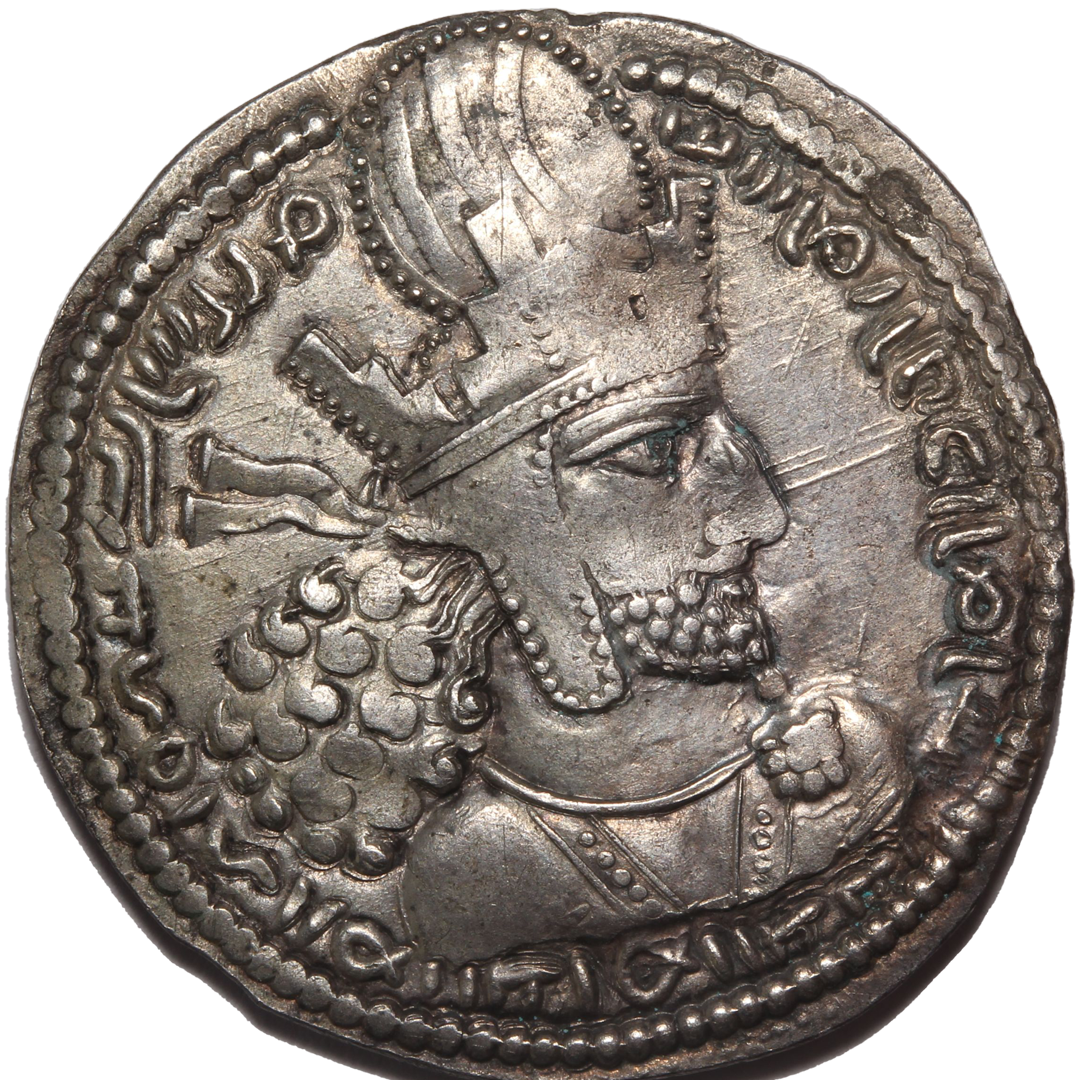
#6. Name the script on this coin:
The writing around the regal head on this coin is in an ancient script called Pahlavi. Both the script and the language of the same name originated around the 2nd Century BCE in the historical kingdom of Parthia, which lies in present-day Iran and Turkmenistan. The Pahlavi script was used extensively by the Sassanian empire that extended from Iran right up till northwest India. This coin was issued in the name of Sassanian King Narseh (293-303 CE), who is described in the Pahlavi inscription as “worshipper of Mazda, King of Kings of Eran and Aneran (Iran and Non-Iran), whose origin is from the gods.”
Image: Silver Drachm of Sassanian King Narseh of Persia, 293-303 CE © Sarmaya Arts Foundation 2015.N.121.20

#7. The font on this movie poster is inspired by an extinct script called Vatteluttu. Which language is it associated with?
Kanguva is a Tamil historical fantasy film to be released later this year. The action of the film is set some 1,500 years in the past and the font on its poster is inspired by an ancient Tamil script called Vatteluttu. A derivative of Brahmi, Vatteluttu which dates to 4th-5th centuries CE, was used to write Tamil and Malayalam.
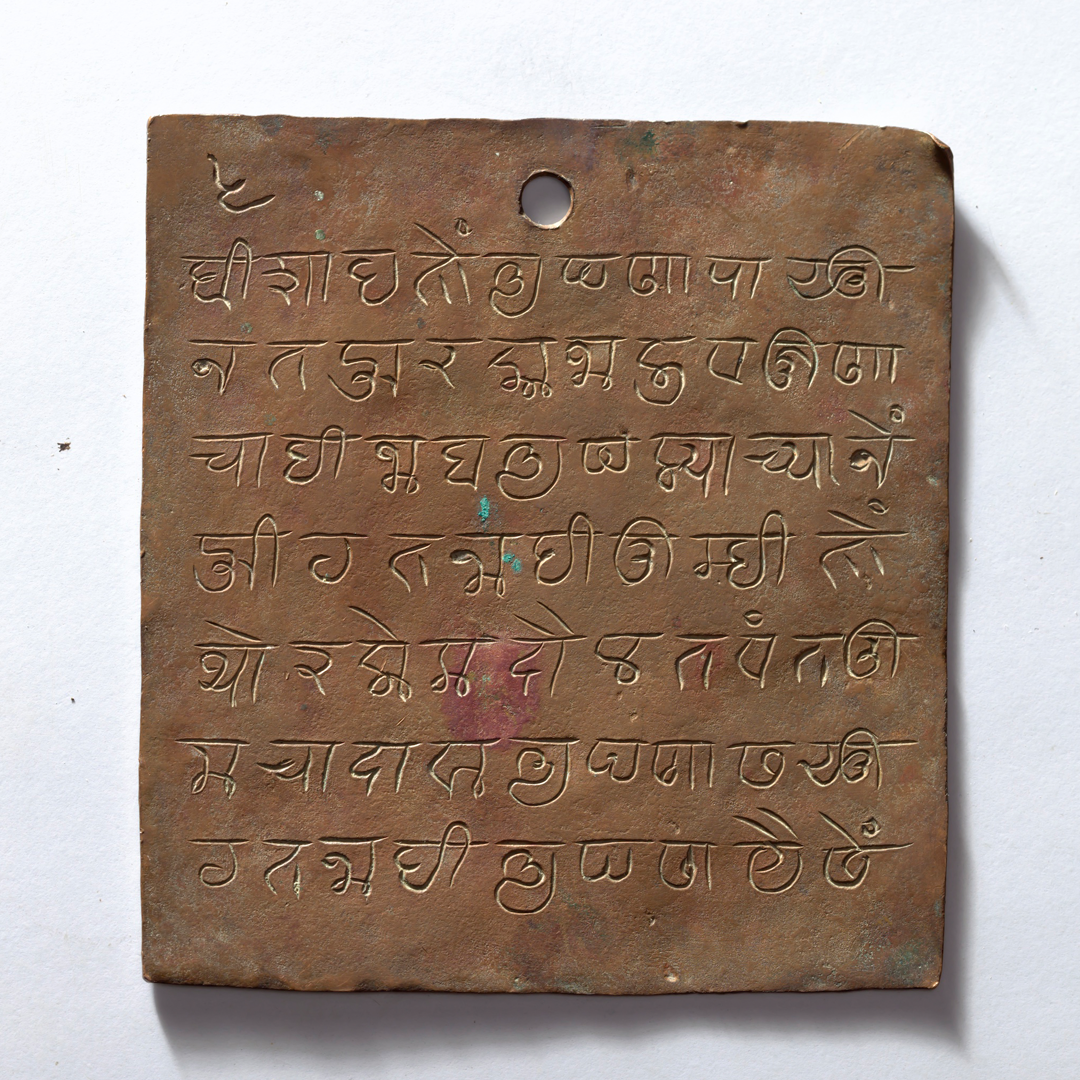
#8. What is the name of the script engraved on this copper plate?
The Modi script is a sister of Devanagari and was associated with the Marathi language. The name supposedly comes from the Marathi word ‘modane’ meaning ‘to bend’, referring to the very rounded form of the script. Today, Marathi is written using the Balbodh script, but the Modi still survives. In this copper-plate inscription dating to the 1700s, the details of a legal agreement are documented in Tamil using the Modi script.
Image: Copper Plate (unidentified), undated (18th century), © Sarmaya Arts Foundation 2022.26.6
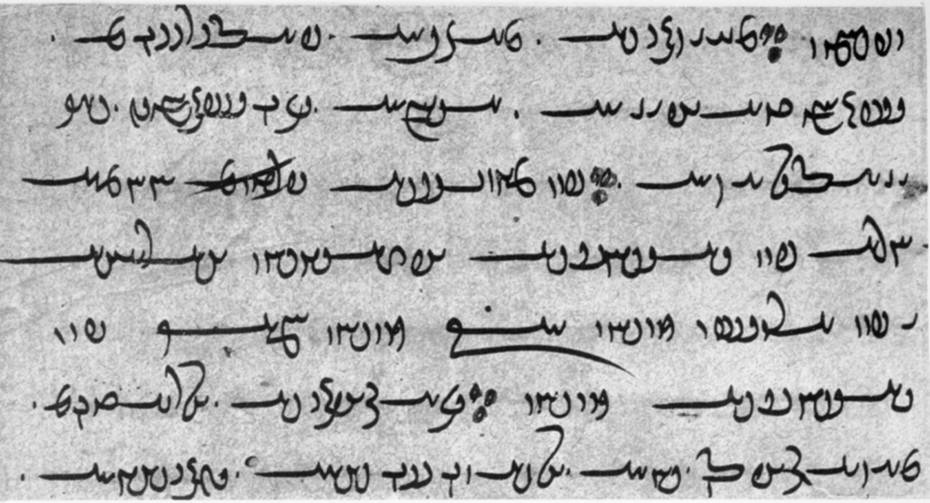
#9. The Pahlavi script is associated with the language of this faith, which has made its home in India for centuries.
Zoroastrianism’s religious texts, compiled in the holy book Avesta, are composed in the Avestan language. Among other sources, its script draws from the Pahlavi alphabet. India’s Parsis constitute the largest ever Zoroastrian community in the world.
Image: Yasna 28.1, Ahunavaiti Gatha of the Avesta, image by Bodleian Library, MS J2 fol. 175 transferred from en.wikipedia by Jozka, Public Domain
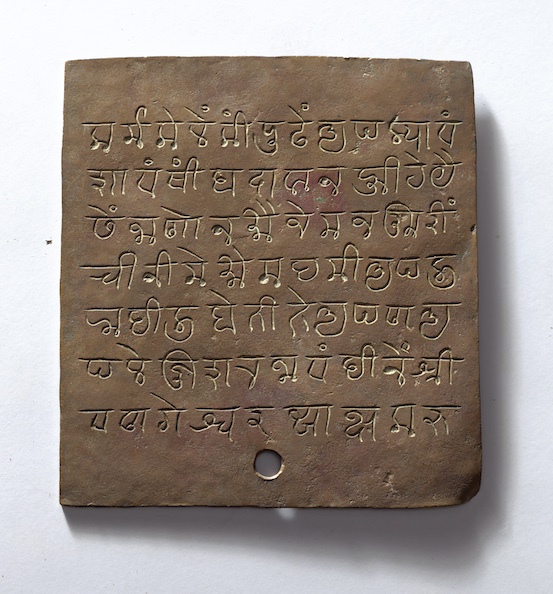
#10. The Modi script was preferred for taking shorthand notes or recording daily transactions. What made it ideal for this purpose?
The Modi script could be rendered in cursive, making it ideal for note-taking. Think about it: unlike with block letters, cursive allows you to write quickly without lifting the stylus from the surface. That’s why it was favoured for documents like the one in the image. This is an 18th-century copper plate inscribed with the details of a legal agreement. While Modi is associated with the Marathi language, in this document it is used to record details in Tamil. This dates it as a relic of the Maratha reign of Thanjavur.
Image: Copper Plate, 18th century © Sarmaya Arts Foundation 2022.26.6



